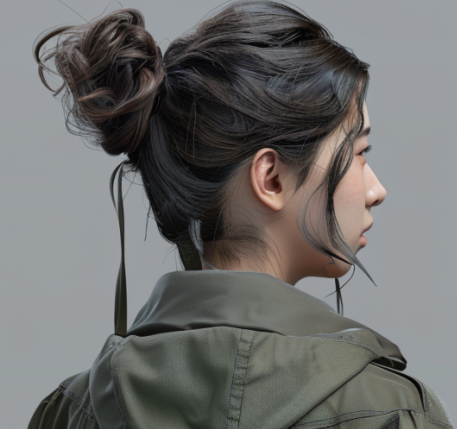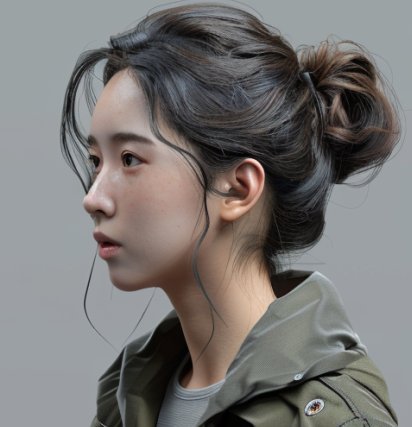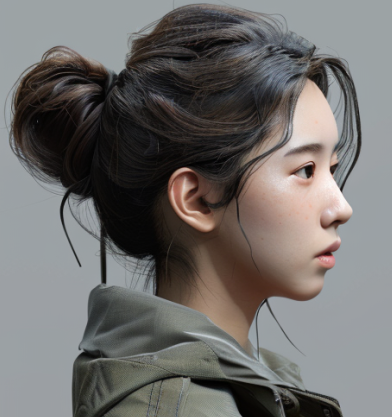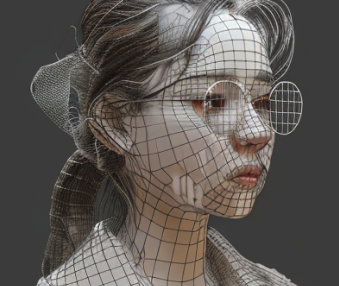This project introduces high-resolution 3D model data created using Blender. Executed on a system assembled two years ago featuring a 3090 FE GPU, i9-10900K CPU, and 128GB RAM, it employed various techniques in modeling, texturing, shading, lighting, and rendering to produce highly detailed and realistic 3D models.

Modeling and Texturing
The key to the modeling process was capturing detailed nuances. We utilized Blender’s diverse functionalities, following these main steps:
- Base Mesh Creation: Established the basic form and added details using necessary loop cuts and edge flows.
- Sculpting: Employed dynamic topology to represent natural and intricate surface details. For complex parts like the face and hands, we used sculpting brushes to enhance fine details.
- Retopology: Used automated retopology tools to reduce the polygon count of the final model, with manual retopology for critical areas to optimize the model.
- UV Unwrapping: Applied advanced UV unwrapping techniques to ensure precise texture application. Clean UV maps were generated using Seam Marking and Smart UV Project.
- Texturing: Utilized Substance Painter to apply realistic textures to the model. Various layers and brushes were employed to finely detail skin textures and clothing.

Shading and Lighting
Shading and lighting are crucial for enhancing the model’s realism. In this project, we used Blender’s node-based shading system to perform the following tasks:
- Shader Creation: Implemented PBR (Physically Based Rendering) shaders to achieve realistic materials. Subsurface Scattering and Hair BSDF were used to represent subtle reflections and translucency of skin and hair.
- HDRI Lighting: Employed HDRI images for natural environmental lighting, resulting in realistic light reflections and shadows on the model.
- Lighting Setup: Used key light, fill light, and rim light to enhance the model’s three-dimensionality. Each light was finely adjusted in angle and intensity to create the desired ambiance.

Rendering
For the final rendering stage, we used Blender’s Cycles engine to produce high-quality images. To achieve high-resolution output and optimal rendering time, the following settings were used:
- Sampling: Utilized up to 4096 samples to achieve high-quality results, with denoising features to minimize noise.
- Optimization: Leveraged OptiX for GPU-accelerated rendering, significantly improving rendering speed.
- Post-Processing: Applied bloom effects and color correction to the final rendered images for enhanced realism.
Through this process and the techniques employed, the 3D model data created is highly detailed and realistic. The combination of Blender’s versatile features and the hardware’s capabilities allowed us to efficiently produce high-quality 3D models.

